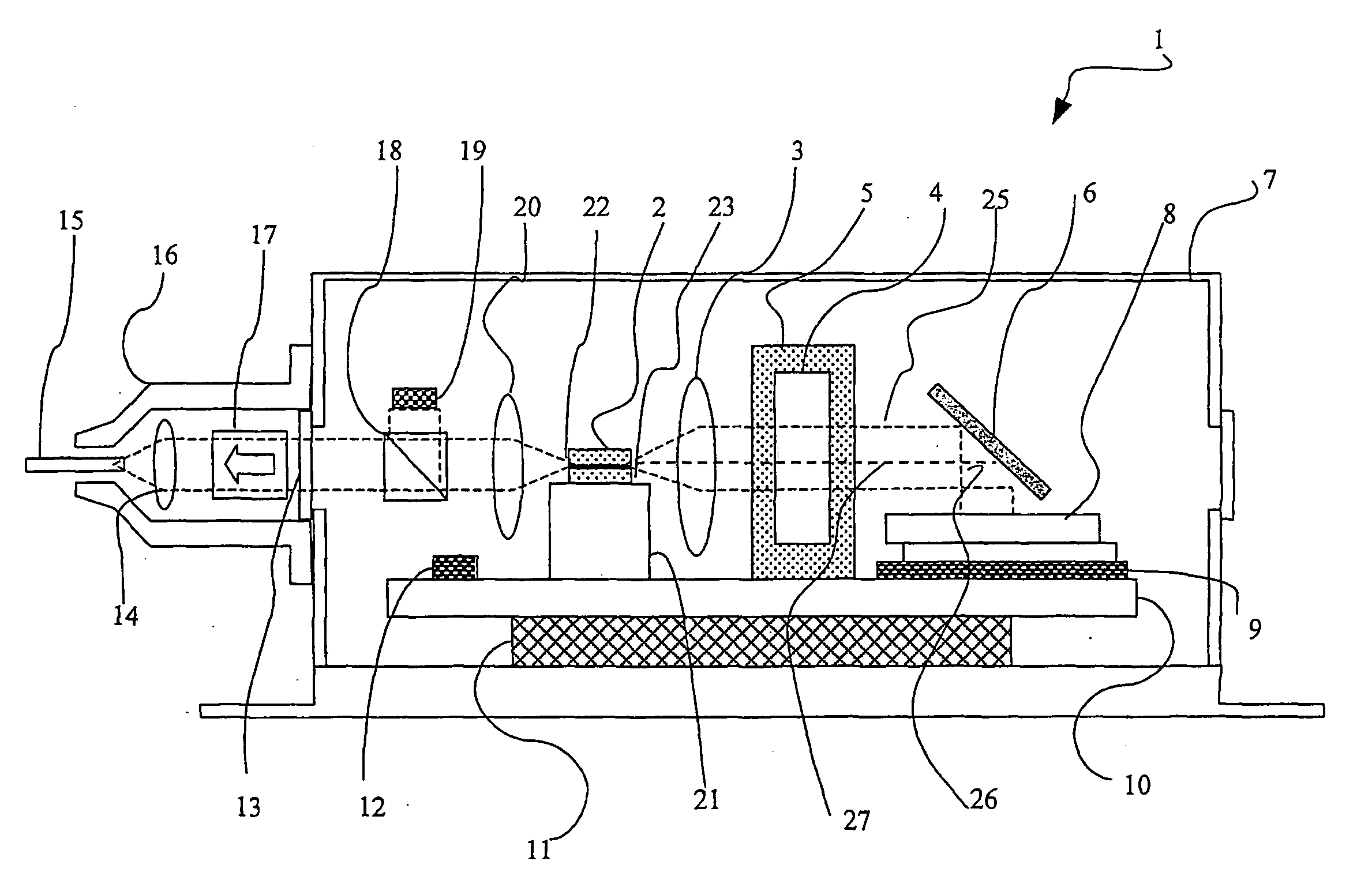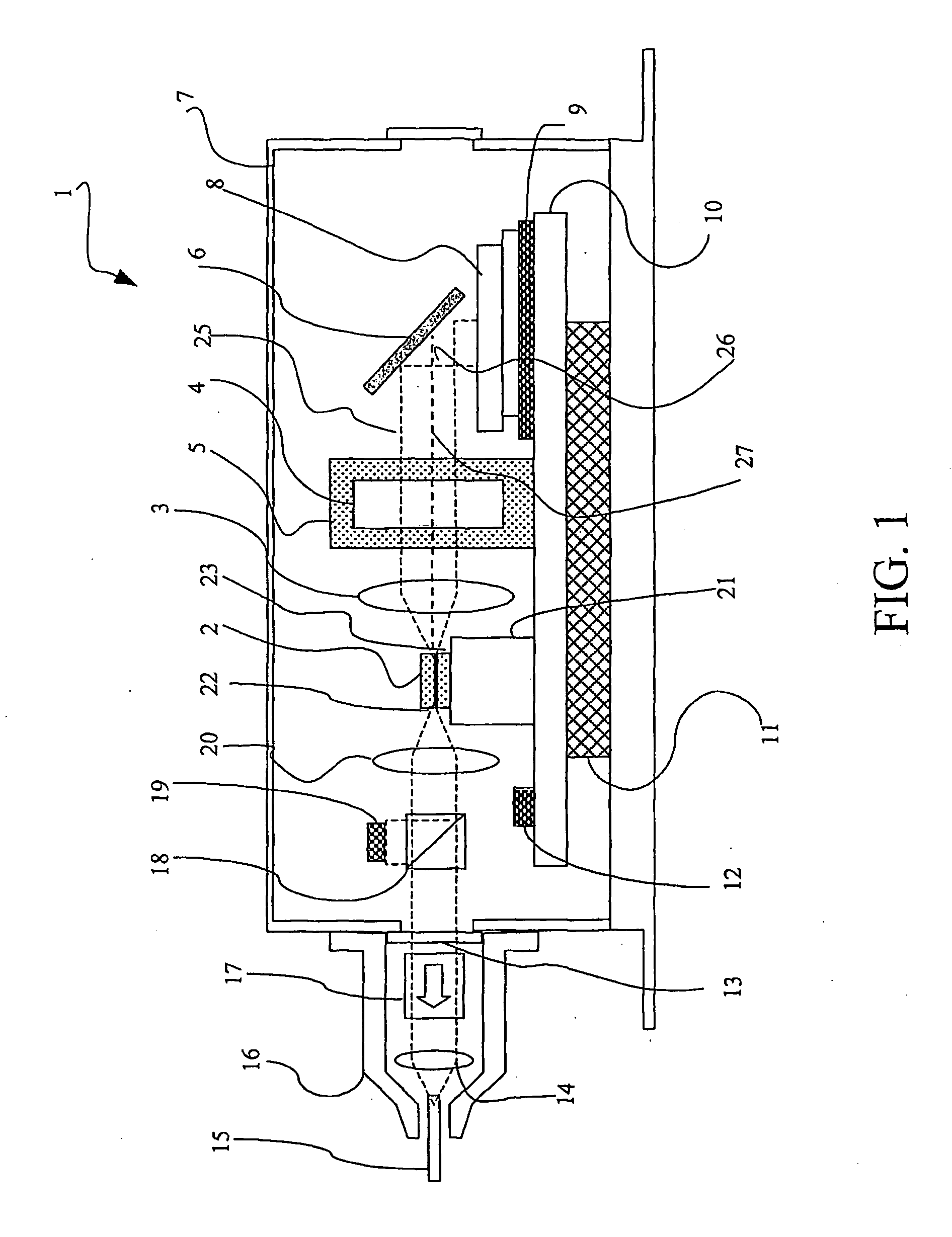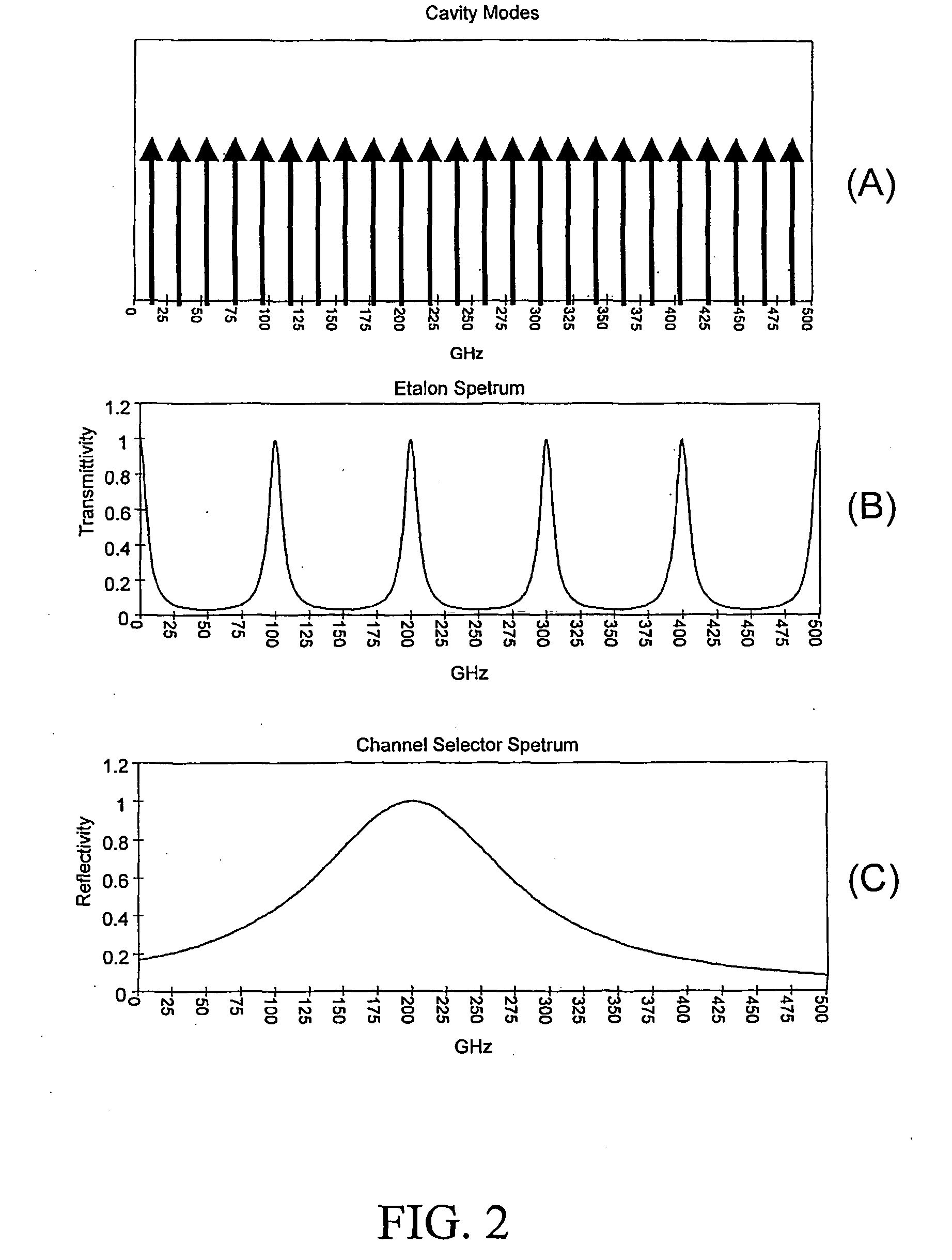Thermally Controlled External Cavity Tuneable Laser
a tuneable laser and external cavity technology, applied in the direction of lasers, lasers, semiconductor lasers, etc., can solve the problems of spatial loss, reduced output power of transmitters, and inaccurate positioning of tuneable elements associated with transmitter lasers over the entire tuning and operating temperature range, so as to reduce misalignment, minimise misalignment, and reduce thermal expansion coefficient.
- Summary
- Abstract
- Description
- Claims
- Application Information
AI Technical Summary
Benefits of technology
Problems solved by technology
Method used
Image
Examples
second embodiment
[0071]FIG. 3 is a schematic illustration of a laser assembly according to a second preferred embodiment of the present invention. The laser assembly 30 comprises a gain medium 31, a collimating lens 32, a FP etalon 33, a deflector 34 and a tuneable mirror 35. The gain medium 31 is based on a semiconductor diode, which comprises a back facet 41 and a front facet 42. The diode's front facet 42 is anti-reflection coated, whereas the back facet 41 is party reflective. Preferably, the gain medium is a semiconductor gain chip with a gain chip waveguide that is bent so that it has an angled incidence on the front facet in order to further reduce back reflections. The deflector of the folded laser cavity according to this second embodiment is a beam splitter (BS) 34. The light emitted from the gain medium 31 is collimated by collimating lens 32 and passes through the FP etalon 33. After having passed through the FP etalon, light travelling along optical path 37 impinges the BS 34, where it ...
third embodiment
[0076]FIG. 4 illustrates a laser system according to the present invention. The same reference numerals are given to elements of the tuneable laser corresponding to those shown in FIG. 1 and their detailed explanation will be omitted.
[0077]After having passed through the FP etalon 4, light impinges on the beam splitter (BS) 45, where it is partially diverted to the tuneable mirror 8. A photodetector 46 receives the portion of the laser light, which has been returned by the tuneable mirror to the BS and then transmitted through the BS, as test beam for power monitoring.
[0078]The laser light transmitted through the BS 45 along the direction of the optical axis of the laser beam, i.e., the laser output beam, is directed through optical isolator 17 and then focussed by lens 14 into an optical fibre 15. It is important to note that the design of the laser cavity according to the embodiment of FIG. 4 has the advantage of improving the compactness of the cavity as a second collimating lens...
PUM
 Login to View More
Login to View More Abstract
Description
Claims
Application Information
 Login to View More
Login to View More - R&D
- Intellectual Property
- Life Sciences
- Materials
- Tech Scout
- Unparalleled Data Quality
- Higher Quality Content
- 60% Fewer Hallucinations
Browse by: Latest US Patents, China's latest patents, Technical Efficacy Thesaurus, Application Domain, Technology Topic, Popular Technical Reports.
© 2025 PatSnap. All rights reserved.Legal|Privacy policy|Modern Slavery Act Transparency Statement|Sitemap|About US| Contact US: help@patsnap.com



